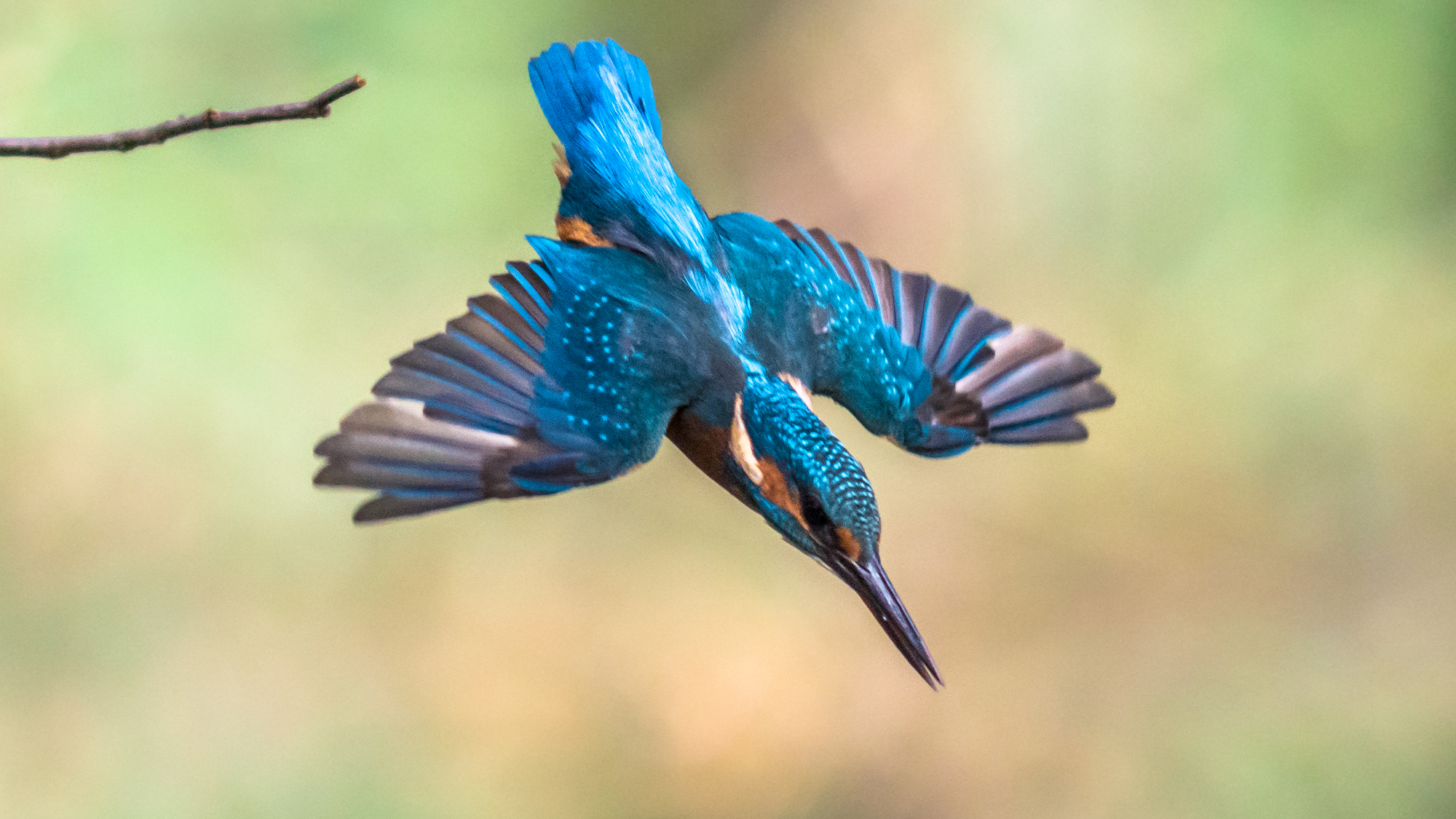

Among birds, raptors are known for their sight, penguins for their huddling techniques, and some kingfishers are skillful divers. Some of these colorful and long-beaked birds dive headfirst into water to catch fish at break-neck speeds, all without damaging their brains. How they accomplish this feat is all in their genes, according to a study published October 24 in the journal Communications Biology.
[Related: Birds are so specialized to their homes, it shows in their bones.]
The special type of diving kingfishers perform is called plunge-diving. Other birds including gannets and pelicans also plunge-dive, but it is not a common foraging method in the animal kingdom. While kingfishers don’t generally hurt themselves on these dives that can reach up to 25 miles per hour, they do not come without risk.
“For kingfishers to dive headfirst the way they do, they must have evolved other traits to keep them from hurting their brains,” Shannon Hackett, study co-author and associate curator of birds at the Field Museum, said in a statement.
Kingfishers are divided into three families that generally share vivid plumage and smaller feet. Kingfisher species also have varied diets. Not all of them eat fish, with many species eating lizards, insects, and even other kingfishers. After a 2017 study found that the groups of kingfishers that eat fish are not even closely related within the kingfisher family tree, it became clear to Hackett that fishy diets and diving abilities likely all evolved from a common ancestor.
“The fact that there are so many transitions to diving is what makes this group both fascinating and powerful, from a scientific research perspective,” says Hackett. “If a trait evolves a multitude of different times independently, that means you have power to find an overarching explanation for why that is.”

In the study, the team compared the DNA of 30 different kingfisher species to see which genes explain the birds’ diet and their ability to dive without sustaining brain damage. They used specimens from various field work.
“When our scientists do fieldwork, they take tissue samples from the bird specimens they collect, like pieces of muscle or liver. Those tissue samples are stored at the Field Museum, frozen in liquid nitrogen, to preserve the DNA,” study co-author and evolutionary biologist Chad Eliason said in a statement.
They began the process of sequencing the full genomes for each of the kingfisher species, generating the entire genetic code of each bird. They then used software to compare the billions of base pairs that make up these genomes to look for the genetic variations that the diving kingfishers have in common.
[Related: What engineers learned about diving injuries by throwing dummies into a pool.]
They found that the fish-eating birds had several modified genes associated with both diet and brain structure. There were mutations in two interesting places. One mutation was on the birds’ AGT gene, which has been associated with dietary flexibility in other species. The other was on the MAPT gene, which codes for tau proteins that relate to feeding behavior.
Tau proteins help stabilize tiny structures inside the brain. However, the accumulation of too many tau proteins can be harmful. Traumatic brain injuries and Alzheimer’s disease in humans have been associated with a buildup of tau.
“I learned a lot about tau protein when I was the concussion manager of my son’s hockey team,” said Hackett. “I started to wonder, why don’t kingfishers die because their brains turn to mush? There’s gotta be something they’re doing that protects them from the negative influences of repeatedly landing on their heads on the water’s surface.”
The team suspects that these tau proteins may be a mixed-bag for the brain. The same genes that keep the neurons in the brain organized are the same ones that fail from repeated concussions or if someone has Alzheimer’s.
“My guess is there’s some sort of strong selective pressure on those proteins to protect the birds’ brains in some way,” Hackett said.
Some next steps for this research now that the correlated genomic variations have been identified include looking to see what these mutations do and to the proteins that are being produced. They’re also interested in what is going to compensate in a brain for all of the concussive forces and see how it can be applied to human brains.
